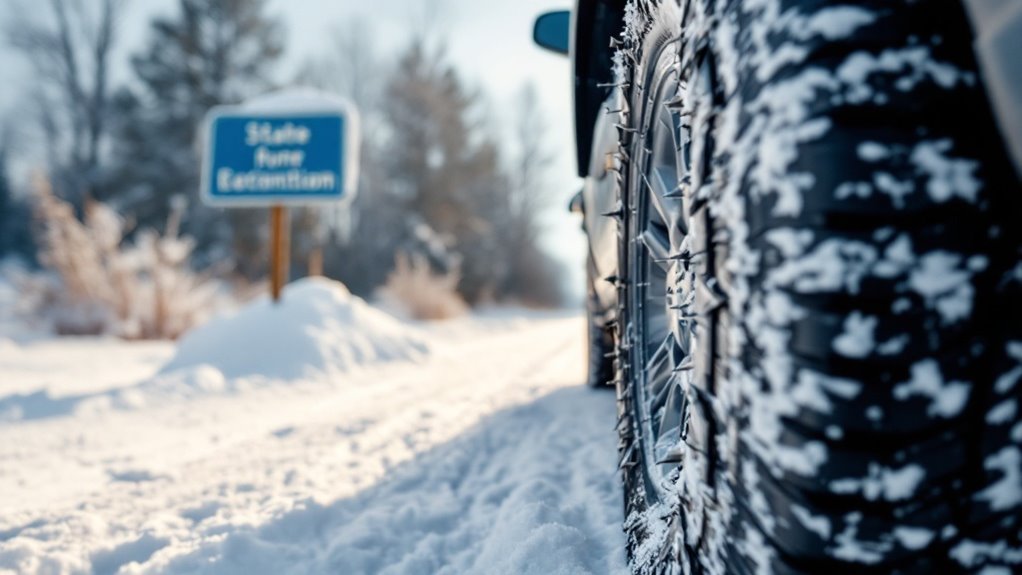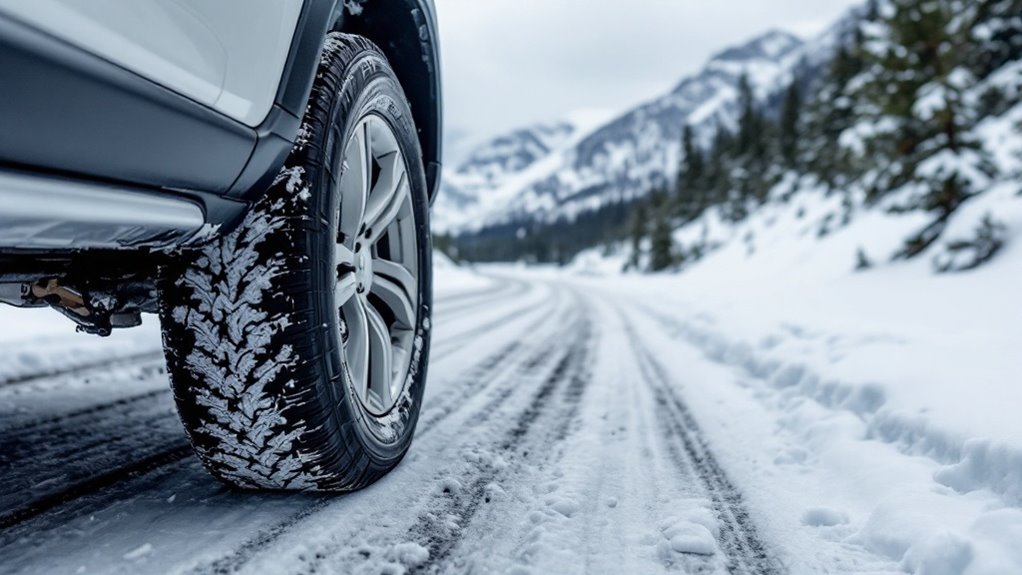Are Studded Snow Tires Legal
This post contains affiliate links. As an Amazon Associate, we earn from qualifying purchases.
Are studded snow tires legal? The answer depends on your state’s rules. Laws change a lot across places. Some worry about safety and road damage. Others think about the environment. Florida and Minnesota ban metal studs all year. Colorado allows them anytime. Oregon permits use from October 1 to April 15. Always check your local laws for exact dates. Fines might hit if you break rules. States have different limits and seasons. Dig into your area’s specific guidelines. Stay safe and avoid trouble on roads. Look up details to know more.
Essential Facts in 30 Seconds
- Studded snow tires’ legality differs by state in the U.S. with specific regulations.
- Some states, like Florida and Minnesota, completely ban metal studs.
- States like Colorado and Vermont allow metal studs year-round.
- Many states permit studs only seasonally, typically from November to mid-spring.
- Always check state-specific laws for legal usage dates and restrictions.
Overview of Studded Tire Regulations
Winter driving can be tough. Studded snow tires help a lot on icy roads. But, rules about them are strict. Many places allow these tires only from November to mid-spring. This stops road damage in warm months. Breaking these rules can mean fines. Regular monitoring of road conditions is essential to ensure compliance with local regulations.
Check these important points to follow the law:
- Use studded tires only in icy or snowy weather.
- Take them off after winter to save roads.
- Keep tire pressure near 40 psi for safety.
- Studded tires can damage road surfaces due to metal studs.
Stick to these tips. Stay safe and avoid trouble.
State-Specific Rules and Restrictions

Studded tire rules change a lot across the U.S. states. Each place has its own laws. Climate and road needs shape these rules.
Some states say no to metal studs. Florida and Minnesota ban them completely. Other states, like Colorado and Vermont, allow them all year. In Oregon, studded tires are legal from October 1 to April 15 to enhance traction during winter conditions.
Check the time limits for using studs. California permits them from November 1 to April 30. Washington DC has strict rules too. Use studs only during snow or ice there. Remove them fast if conditions change. Thirty U.S. states allow metal studs seasonally under specific winter time frames.
Here’s a simple list of state rules:
- Banned: Florida, Minnesota (metal studs)
- Year-Round: Colorado, Vermont
- Seasonal: California (Nov 1-Apr 30)
- Conditional: Washington DC (snow/ice only)
Always look up local laws. Stay safe and follow the rules. Compliance keeps roads good for everyone.
Rubber Studs vs. Metal Studs

Picking the right studs for snow tires matters a lot.
Metal studs use tough tungsten carbide pins. They grip ice really well. Expect awesome braking and speed on hard snow. However, studs are permitted only between November 1 and April 1 in California.
But, they tear up roads bad. Many places ban them due to damage. Data shows metal studs wear out pavement fast. Think twice before using them. Additionally, their use is often restricted to specific winter months in certain states restricted to winter months.
Rubber studs sit in the tire tread. They don’t grab ice as strong. Still, they’re kind to roads. Plus, they make less noise while driving.
Perfect if roads need care. Studies say rubber studs cut damage by 70%. That’s a huge save!
Compare them quick:
Metal studs? Top grip, tons of road harm.
Rubber studs? Okay grip, almost no road harm.
Safety or road care—what’s your pick? Balance both for smart driving.
Regional and Climatic Influences

Think about where you live before picking rubber or metal studs for snow tires. Local laws and weather change what works best for you. Some places in the U.S. ban metal studs completely. Florida and Texas say no to them due to little snow. But Colorado and Vermont allow metal studs all year.
Weather shapes these rules a lot. Northern spots like Alaska have long winters. They allow metal studs from September 15 to April 30 in far north areas. Southern areas with mild winters often ban them. Arizona only permits them from October 1 to May 1. Be aware of state-specific regulations to ensure compliance with legal usage dates.
Check these rules for your state:
- Alaska: Dates depend on your location.
- Arkansas: Allowed from November 15 to April 15.
- Florida: No metal studs at all.
Always look up your local laws first. Stay safe on the road!
Safety and Environmental Considerations

Think about safety and nature before picking studded snow tires. These tires grip ice well near freezing. They keep you safe on icy rural roads. But on dry city streets, they don’t stop fast. This can make driving risky in mixed weather.
Now, look at harm to the environment. Studded tires tear up roads a lot. This means more repairs and wasted materials. It also uses up more resources for new tires. Plus, it adds to air pollution.
Check these points:
- Safety: Great on ice, bad on dry roads.
- Nature: Lots of road damage, more pollution.
Studless tires work just as good without hurting roads. Many places ban studded tires due to damage. Additionally, using snow tires can improve performance in winter conditions, making them a safer choice for icy roads.
Frequently Asked Questions
How Do Studded Tires Affect Vehicle Handling?
Studded tires really help on icy roads. They improve grip and cut down skids. Your car stays safe with better control. On dry roads, they don’t work well. You might feel shaky vibrations. This can mess up your steering. Studies show they reduce icy crashes by 30%. Still, be careful on clear pavement. They’re not perfect everywhere. Drive smart and stay alert!
What Is the Cost of Studded Tires?
Curious about studded tires? Their cost ranges from $250 to $1,500 per set. Compare prices among different brands. Save money with smart choices. Don’t forget tire care! Maintenance adds extra costs over time. Check deals online or nearby shops. Get the best value today!
Can Studded Tires Be Used on Highways?
Got questions about studded tires on highways? Let’s break it down. Rules differ by state and season. Always check local laws first. Some places allow them only in winter. Others ban them completely. Safety matters a lot. Studded tires grip icy roads well. But they damage highways if overused. Follow legal time frames for usage. Install them correctly to avoid issues. Stay safe and legal on the road.
How Long Do Studded Tires Last?
Got questions about studded tires? Their lifespan often reaches 5 to 6 seasons. Keep them strong with right air pressure. Store them properly after winter ends. These steps help tires fight ice well. Data shows good care boosts durability. Stick to simple maintenance for best results.
Are Studded Tires Noisy to Drive With?
Studded tires make a lot of noise while driving. You hear a constant clicking sound. This noise can bother you on dry roads. It really cuts into your comfort. Isn’t that annoying? Stick with it, though! Studies show studded tires are louder than regular ones. Many drivers report this clicking on highways. Keep this in mind for your next trip.
Conclusion
Curious about studded snow tires? Let’s dive right in. These tires help with icy roads. They grip better in harsh winter weather. But are they legal everywhere? Not always. Rules change from state to state. Some places ban them completely. Others allow them only in winter months. Why the strict rules? Studded tires can damage roads. States want to protect their pavement. Check your local laws before buying. Visit your state’s transport website for details. Penalties for breaking rules can be costly. Stay safe and follow the guidelines. Choose tires that match your area’s needs. Drive with confidence this snowy season!
